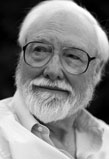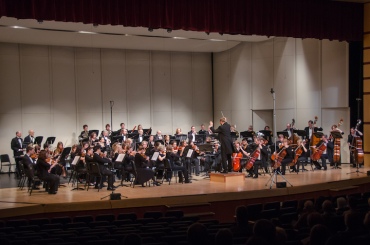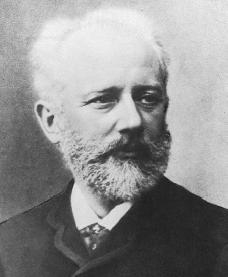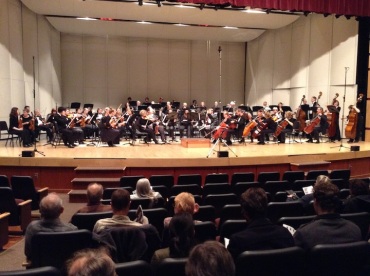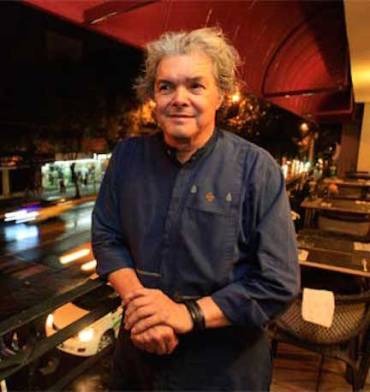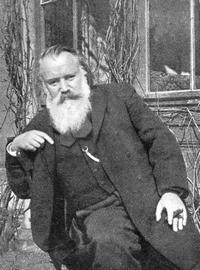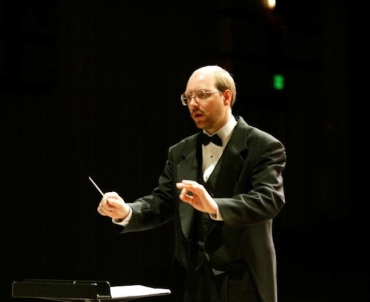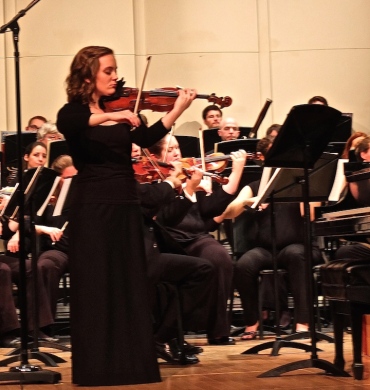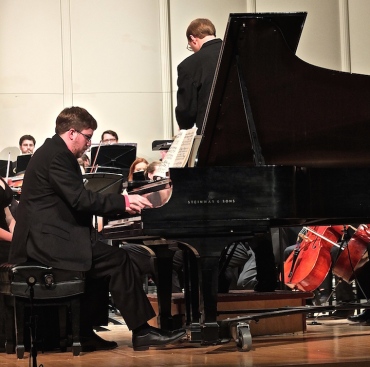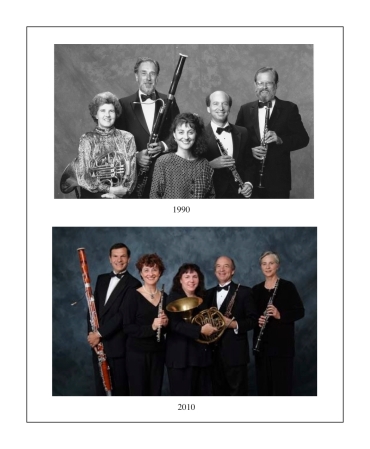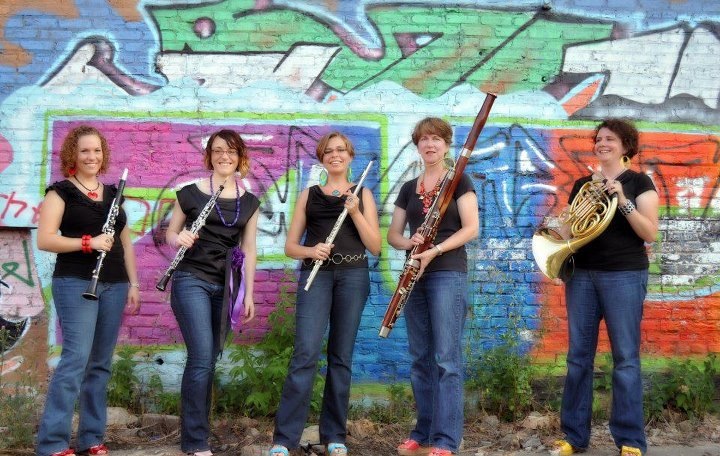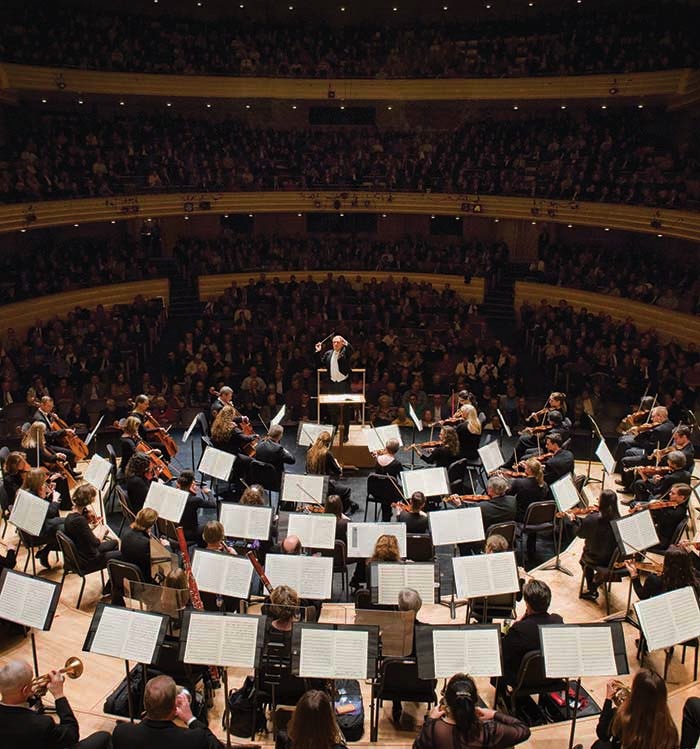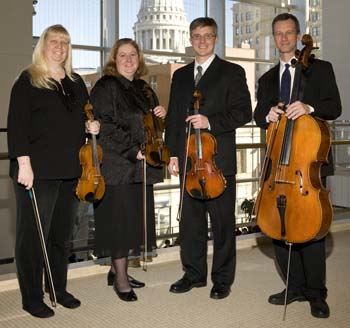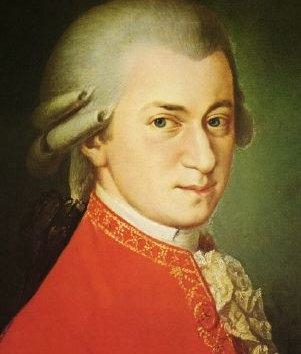The Well-Tempered Ear
Edgewood College will live-stream its FREE Spring Celebration concert this Friday night
Leave a Comment
PLEASE HELP THE EAR. IF YOU LIKE A CERTAIN BLOG POST, SPREAD THE WORD. FORWARD A LINK TO IT OR, SHARE IT or TAG IT (not just “Like” it) ON FACEBOOK. Performers can use the extra exposure to draw potential audience members to an event. And you might even attract new readers and subscribers to the blog.
By Jacob Stockinger
At 8 p.m. CDT this Friday night, April 30, the music department at Edgewood College will live-stream its FREE online Spring Celebration concert.
Here is the link: music.edgewood.edu
Here is the program:
The Edgewood Chamber Orchestra (below) will perform music by the Austrian composer Johann Nepomuk Hummel, who studied with Mozart and knew Haydn, Beethoven and Schubert (see the Wikipedia bio at https://en.wikipedia.org/wiki/Johann_Nepomuk_Hummel; Krzysztof Penderecki, a Polish composer who died a year ago March; and the Argentinean “new tango” composer Astor Piazzolla, whose birth centennial was last month. Soloists include Gwyneth Ferguson on trumpet, and Malia Huntsman on oboe.
The Chamber Singers (below) will offer selections from Broadway musicals and contemporary choral arrangements, including Lord of the Rings by Enya, works from Josh Groban, and the Polish composer Henrik Gorecki.
The Guitar Ensemble will perform Haru no Umi (The Sea in Spring) by the Japanese composer Michio Miyagi (below), and a medley from the 1970s rock group Chicago: 25 or 6 to 4/Saturday in the Park, by Mark Lamm.
The Chamber Winds will perform selections from Crooner’s Serenade; Josef Rheinberger’s Evening Song (Abendlied, in the YouTube video at the bottom); and an arrangement of John Williams’ movie score for Star Wars: The Force Awakens.
Tags: #ArgentineanComposer, #BlogPost, #BlogPosting, #BroadwayMusical, #CentralTime, #ChamberMusic, #ChamberOrchestra, #ChoralMusic, #CoronavirusPandemic, #Crooner'sSerenade, #DaylightTime, #EdgewoodCollege, #EdgewoodCollegeChamberOrchestra, #EdgewoodCollegeChamberSingers, #EdgewoodCollegeChamberWinds, #EdgewoodCollegeGuitarEnsemble, #EveningSong, #FacebookPost, #FacebookPosting, #FranzSchubert, #GuitarMusic, #GwynethFerguson, #HaruNoUmi, #HenrickGorecki, #JacobStockinger, #JapaneseComposer, #JapaneseMusic, #JohannNepomukHummel, #JohnWilliams, #JosefRheinberger, #JoshGroban, #KrzysztofPenderecki, #LiveStreaming, #LordoftheRings, #LudwigVanBeethoven, #MailaHuntsman, #MarkLamm, #MichioMyagi, #MovieScore, #MusicalTheater, #NewMusic, #NewTango, #OboeMusic, #OnlineConcert, #OrchestralMusic, #PolishComposer, #RockandRoll, #RomanCatholic, #SergeiPavlov, #StarWars, #StarWars:TheForceAwakens, #TheEar, #TrumpetMusic, #VirtualConcert, #VocalMusic, #Wikipediaentry, #WindMusic, #WolfgangAmadeusMozart, #YouTubevideo, 1970s, Abendlied, Argentina, arrangement, arrangements, Arts, Asia, asian, audience, Austria, Austrian, Ástor Piazzolla, Beethoven, biography, blog, blog posting, Broadway, Broadway musical, Catholic, centennial, Central Time, Chamber music, chamber orchestra, Chicago, Choir, choral music, Classical music, composer, Concert, contemporary, coronavirus, coronavirus pandemic, crooner, Crooner's Serenade, daylight time, Edgewood College, Edgewood College Chamber Orchestra, Edgewood College Chamber Winds, Edgewood College Guitar Ensemble, Enya, evening, Evening Song, Facebook, film, forward, Franz Schubert, German, Germany, group, guitar, guitar music, guitarist, Gwyneth Ferguson, Haru no Umi, Henrik Gorecki, Hummel, Jacob Stockinger, Japan, Japanese, Johann Nepomuk Hummel, John Williams, Josef Rheinberger, Josh Groban, Krzysztof Penderecki, like, link, live-stream, livestream, Lord of the Rings, Ludwig van Beethoven, Madison, Malia Huntsman, march, Mark Lamm, medley, Michio Myagi, month, movie, movie score, Mozart, Musical theater, new, new nusic, new tango, Oboe, oboist, online, orchestral music, pandemic, Penderecki, perform, performer, Piazzolla, player, Poland, Polish, post, posting, Rock, rock and roll, Roman Catholic, Schubert, sea, seledtions, Serenade, Sergei Pavlov, share, sing, singer, Singing, soloist, song, Spring, Star Wars, Star Wars: The Force Awakens, Student, study, tag, tango, The Ear, Trumpet, trumpeter, Viola, Violin, virtual, vocal music, Wikipedia, wind instruments, wind music, Wisconsin, Wolfgang Amadeus Mozart, works, year, YouTube
Classical music: Even as the school year winds down, there are several noteworthy events and concerts at the University of Wisconsin-Madison School of Music this weekend.
Leave a Comment
By Jacob Stockinger
Even as the school year winds down, there are several noteworthy events and concerts at the University of Wisconsin this weekend.
FRIDAY
At 7:30 p.m. in Mills Hall, the UW Wind Ensemble will perform a FREE concert under director Scott Teeple.
The Wind Ensemble is the premier wind/percussion ensemble in the UW-Madison School of Music. Repertoire varies from classical wind compositions to contemporary works.
The Wind Ensemble actively commissions new works from world-renowned composers, often performing with internationally acclaimed soloists and guest conductors.
Jacob Klingbeil will assist as graduate student guest conductor.
YOUniversity Band will be side-by-side with community musicians
The program includes:
Gvorkna Fanfare by Jack Stamp
Baron Cimetieres Mambo by Donald Grantham
Irish Tune from County Derry by Percy Grainger
Starwars Trilogy, by John Williams/arr. Donald Hunsberger
SATURDAY
At 1:30 p.m. in Morphy Recital Hall, a FREE Doctoral Recital: Russian Literature and the Music Salon. It is a multimedia concert with narration.
This doctoral project, organized by pianist Oxana Khramova, involves several students and faculty members from various departments.
It will be devoted to writers and composers who were connected to St. Petersburg in their lives and works: Nikolai V. Gogol, Anna A. Akhmatova, Joseph A. Brodsky, Sergei Prokofiev and Alfred Schnittke.
Listeners will experience their masterpieces through the prism of Russian music, language and visual images. By attempting to combine literature, music and art. participants hope to recreate the atmosphere of St. Petersburg’s culture (as recreated in the museum photo below).
Participants include:
Oxana Khramova, piano, DMA candidate, School of Music, where she is a student of Christopher Taylor
with
Yana Groves, piano, DMA candidate, School of Music
Nicole Heinen, soprano, MM candidate, School of Music
Ilona Sotnikova, visual images and literature, PhD candidate, Department of Slavic Languages and Literature
Conor Ryan, narrator, Undergraduate Student, Department of Slavic Languages and Literature
At 4 p.m., in Mills Hall, the All-University String Orchestra will give a FREE concert under the baton of director Janet Jensen (below, in a photo by Katrin Talbot). Sorry, no word on the program.
From 4 to 6 p.m. the Wingra Woodwind Quintet will hold its 50th Anniversary Party at the University Club (below), 803 State St., next to the Humanities Building.
Embodying the Wisconsin Idea and serving as role models to our students, the Wingra Quintet has a rich tradition and will honor current and former members.
Former members who plan to attend are Robert Cole, flute, Marc Fink, oboe, Glenn Bowen, clarinet, Richard Lottridge, bassoon, Douglas Hill, horn, and Nancy Becknell, horn. (Below are photos from 1990 and 2010.)
A short program of 20 minutes is planned and then we will celebrate with hors d’oeuvres and beverages catered by the University Club. Everyone is invited to enjoy the food, music, and good company of current and former members of the Wingra Quintet.
Please RSVP to news@music.wisc.edu
Learn about the rich history of the WWQ here: http://www.music.wisc.edu/wingra-woodwind-quintet/
SUNDAY
At 1 p.m. in Mills Hall, the UW Women’s Chorus (below) and University Chorus will give a FREE concert. Anna Volodarskaya and Sarah Guttenberg will conduct.
This event is FREE. Registration is encouraged, but not required.
No program has been announced.
Tags: Akhmatova, Alfred Schnittke, Arts, Bassoon, Brodsky, Chamber music, choral music, chorus, clarinet, Classical music, flute, Fort Worth Star-Telegram, Gogol, Horn, Jacob Stockinger, Madison, Percy Grainger, Prokofiev, Russia, Russian literature, Russian music, salon, Schnittke, string music, strings, University of Wisconsin-Madison School of Music, University of Wisconsin–Madison, Violin, vocal music, wind instruments, winds, Wingra Woodwind Quintet, Wisconsin, Wisconsin Idea, women's chorus
Classical music: Research shows that the brains of musicians work in a different and good way. Plus, the wind quintet Black Marigold performs a FREE concert this Saturday at noon at Grace Episcopal Church.
Leave a Comment
ALERT: The local wind quintet Black Marigold (below) will give a FREE concert on this Saturday, Dec. 13, from noon to about 1 p.m. downtown at Grace Episcopal Church, 116 West Washington Avenue, on the Capitol Square. The program includes: Overture to “The Magic Flute” by Wolfgang Amadeus Mozart as arranged by David M. Carp; the Wind Quintet by Paul Taffanel (the opening is at the bottom in a YouTube video); “Eight” by Kenn McSperitt; and “La Nouvelle Orleans” by Lalo Schifrin. The concert is part of the Grace Presents series.
By Jacob Stockinger
Here is something in the way of a holiday gift or bonus from scientific researchers to all kinds of musicians — professional, amateur and students.
It has to do with how the human brain functions while listening and especially while making music. It is not a new topic, as the YouTube video below shows.
I won’t say more except to offer a link to the story that appeared on NPR (National Public Radio):
Tags: Arts, Bassoon, Black Marigold, Brain, Chamber music, Christmas, clarinet, Classical music, flute, Horn, human, human brain, Jacob Stockinger, Lalo Schifrin, Madison, Mozart, Music, NPR, Oboe, Paul Taffanel, scientific research, The Magic Flute, thinking, University of Wisconsin-Madison School of Music, University of Wisconsin–Madison, wind instruments, Wind quintet, Wolfgang Amadeus Mozart, YouTube
Classical music: What has the UK’s Scotland contributed to classical music -– besides bagpipes? Plus, this afternoon is the last performance of the season-opening program by the Madison Symphony Orchestra.
3 Comments
ALERT: The final performance of the Madison Symphony Orchestra’s season-opening program of Richard Strauss “Also Sprach Zarathustra” (with the organ theme from “2001: A Space Odyssey”), Frank Martin’s Concerto for Seven Wind Instruments and Camille Saint-Saens (Symphony No. 3 “Organ”) will be given today at 2:30 p.m. in Overture Hall of the Overture Center. Here is a link to a previous post about the concert as well as links to several very positive reviews:
Here is a link to a review by John W. Barker (below) for Isthmus:
http://www.isthmus.com/daily/article.php?article=43634
Here is a link to the review by Gregg Hettmansberger (below) for Madison Magazine’s blog “Classically Speaking”:
http://www.madisonmagazine.com/Blogs/Classically-Speaking/September-2014/New-Season-New-Decades/
And here is a link to Lindsay Christians’ review for The Capital Times and 77 Square:
By Jacob Stockinger
All right, then.
The Big Vote is over.
By a wider-than-predicted margin of 55 to 45 percent, Scotland has chosen to remain a member of the United Kingdom.
The outcome surprised The Ear since so many of the arguments offered by Great Britain seemed similar to the ones that were probably made about why the United States should remain a colony of England.
But now the question is answered for at least another generation.
So, in the traditional of newsy arts coverage, the Deceptive Cadence blog of National Public Radio (NPR) asked: What has Scottish culture contributed to classical music?
You’d be surprised. I was.
One obvious, and, for many, noisily unpleasant, answer is the bagpipes. We’re not talking about Scotland-inspired music such as Felix Mendelssohn‘s justly famous “Hebrides” Overture (at bottom in a popular YouTube video featuring Claudio Abbado conducting the London Symphony Orchestra, though it sure does seem to capture the dark North Sea atmosphere of Scotland.)
But there are other answers too, and some of them may surprise you.
Be sure to listen to some of the sound samples provided on the NPR website posting. Here is a link:
Also be sure to check out the readers’ comments. They are a hoot, or whatever the equivalent saying is in Scotland.
And the reader comments contain one of the all-time best puns, based on The Rolling Stones song “Hey You, Get Off of My Cloud.” Of course, someone says it isn’t funny! Which makes it only funnier to The Ear.
Tags: 2001, 2001: A Space Odyssey, Arts, Camille Saint-Saëns, Capital Times, Classical music, concerto, Felix Mendelssohn, Frank Martin, Hebrides Overture, Jacob Stockinger, John DeMain, London Symphony Orchestra, Madison, Madison Symphony Orchestra, Mendelssohn, Music, National Public Radio, NPR, Orchestra, organ symphony, Overture, Overture Center, Richard Strauss, Rolling Stones, Scotland, United Kingdom, United States, wind instruments, YouTube
Classical music education: The Wisconsin Youth Symphony Orchestras (WYSO) is expanding its chamber music program to non-WYSO string and wind players. The program also seeks non-WYSO pianists.
Leave a Comment
By Jacob Stockinger
Here is the news I have heard from cellist Karl Lavine, who heads the expanding chamber music program (below) for the Wisconsin Youth Symphony Orchestras. It is good news for many reasons, but especially to pianists who often remain stuck as soloists and never experience the joy of collaborative work in chamber music. (Below is a piano quartet from a WYSO chamber music concert last spring in Morphy Hall at the University of Wisconsin-Madison School of Music.)
Karl Lavine (below top) is as congenial and cooperative as he is accomplished, and that is saying something. He is the principal cellist with both the Madison Symphony Orchestra and the Wisconsin Chamber Orchestra, and he also plays in the MSO’s Rhapsodie String Quartet (below bottom).
Writes Karl:
“We are interested in having pianists for the WYSO Chamber Music Program. We have not had any formal auditions to date as most of the pianists have previously come from WYSO or they have been students of Karen Boe (below), who is the WYSO Chamber Music Program piano ensemble coach.
“We also have only had two or three pianists — all advanced musicians capable of learning and performing chamber works by Wolfgang Amadeus Mozart, Ludwig van Beethoven or Johannes Brahms — per semester working with our groups. (At bottom is a YouTube video of violinist Kyung-Wha Chung playing one of The Ear’s favorite chamber works, the piano part of which he wishes he himself could play with a violinist: Mozart’s dramatic and tuneful Violin Sonata No. 21 in E minor, K. 304.)
“The history so far has been one that involved our more advanced players, mostly string players, with these pianists. However, we have had wind players join us as well. Doing both their main instrument and the piano can stretch them pretty thin.
“We have not opened collaboration with pianists up to our younger string and wind players primarily because the level of technique and experience necessary make it very difficult to assign repertoire.
“I am not opposed to considering younger WYSO instrumentalists to collaborate with pianists, but it creates a whole new set of parameters for coaching and rehearsing.
“Frankly, it is tough enough to get the more experienced pianists up to speed on the standard chamber repertoire — even though they might be very accomplished as soloists — given we only have 10 coaching sessions per semester. Many of the pianists that have participated in the program have never worked in this type of collaboration before.
“We are open to the idea of having an audition of prospective pianists. In addition, a letter of reference from their private teachers would be required. We would also limit applicants to pianists who have advanced to the Wisconsin School Music Association State Level with the “A” list repertoire, or participated in Wisconsin Music Teachers Association or Federation competition in piano.
Here is another tidbit for the blog: We are opening up participation in the WYSO Chamber Program to string and wind players who are NOT a part of WYSO. We have a separate brochure/application for these folks. This is a pilot project this year and we will see what our numbers turn out to be.
So, It would be most helpful if you could write about WYSO’s Chamber Music Program offering openings for those instrumentalists who are not current members, orchestral musicians (string and wind Players) AND pianists:
“1. Membership is open to those between the ages of 10 and 18 and currently in Middle School or High School.
“2. For pianists, a letter from your current private teacher recommending you for the program.
“3. A WYSO Chamber Music Program Brochure can be obtained from the WYSO office. You can find information about the coaching sessions and performance possibilities offered as well as expectations.
“4. For more information, contact the WSYO office: (608) 263-3320, OR send an email to wyso@wyso.music.wisc.edu OR by contacting Program Director, Karl Lavine at (608) 239-4131; email is karllavine@gmail.com
The WYSO Chamber Music Program offers 10 coaching sessions a semester and public recitals in December and May.
Tags: Arts, Beethoven, Brahms, Chamber music, Classical music, Jacob Stockinger, Johannes Brahms, Kyung-Wha Chung, Ludwig van Beethoven, Madison Symphony Orchestra, Mozart, Music, Music education, Orchestra, Piano, Quartet, quartets, Sonata, string instruments, String quartet, string trio, strings, trio, University of Wisconsin-Madison School of Music, University of Wisconsin–Madison, Violin Sonata, wind instruments, winds, Wisconsin, Wisconsin Chamber Orchestra, Wisconsin Youth Symphony Orchestra, Wolfgang Amadeus Mozart, WYSO, WYSO Chamber Music Program, YouTube



